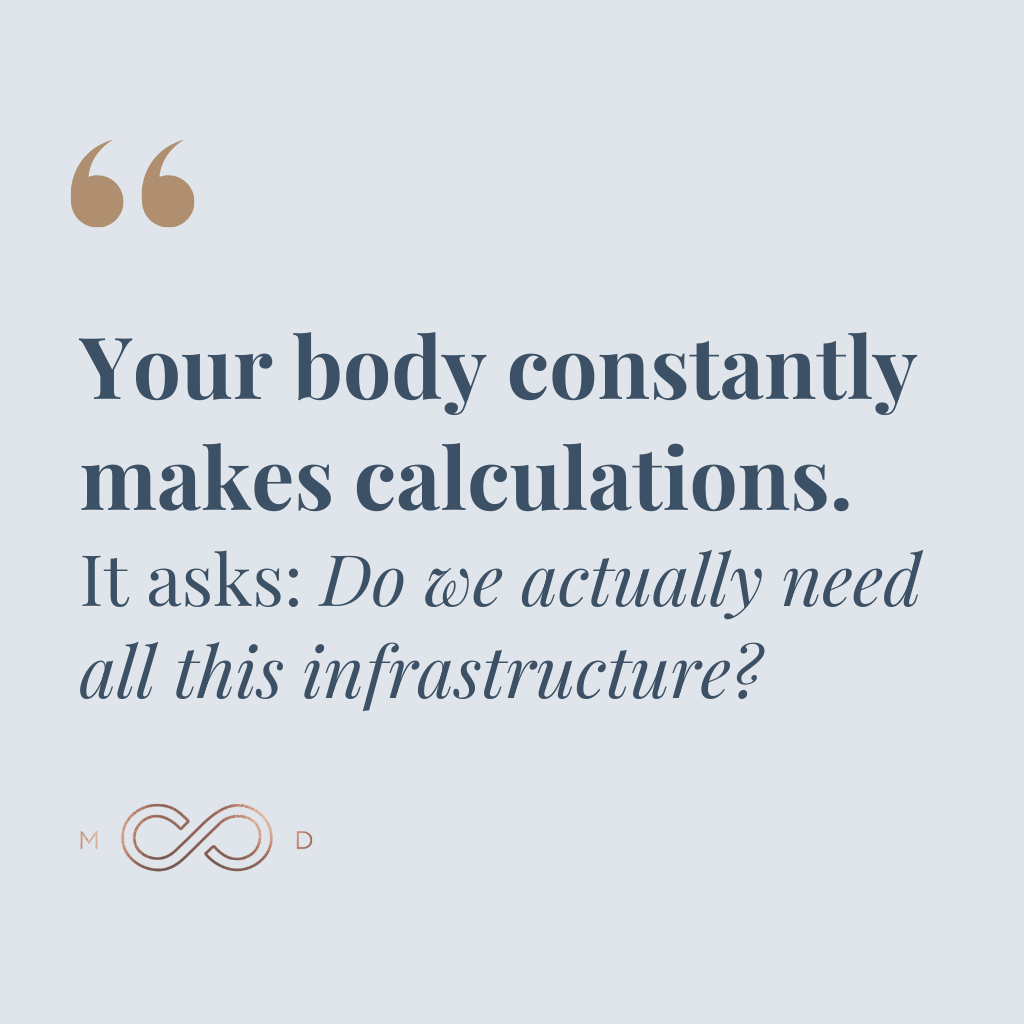You’ve been consistent with your strength training for months. You’re finally seeing results. But then life happens.
Maybe you catch a nasty cold. Maybe work demands explode. Or maybe you’re planning a vacation and wondering if two weeks away from the gym will undo all your progress.
The question haunts every person committed to their fitness: How long does it take to lose muscle?
The answer isn’t as simple as a number on a calendar. But understanding the timeline — and what’s actually happening in your body — can help you make smarter decisions about your training and avoid panicking every time you miss a workout.
Your Body Is Always Listening
You might be surprised to learn that your body isn’t all that interested in keeping muscle around.
Maintaining muscle is metabolically expensive. Your body has to feed it, repair it, and allocate resources to keep it functioning. In times past, when our ancestors faced genuine food scarcity, carrying extra muscle around without needing it was a survival disadvantage.
So your body constantly makes calculations. It asks: Do we actually need all this infrastructure?
The way you answer that question is through biofeedback. Every time you challenge your muscles — such as with resistance training — you send a clear signal: Yes, we do in fact need this. Keep it around.
But the moment you stop sending those signals, your muscles are on the clock.
Your body immediately begins the process of optimization. Not next month. Not next week. Right away. It starts determining what the new baseline should be based on the demands you’re currently placing on it.
How Long Does It Take to Lose Muscle: The Timeline
So how long does it actually take to lose muscle? Research shows a fairly consistent pattern, though individual variation is significant.
- Within the first 2–3 weeks, microscopic changes begin. Muscle protein synthesis declines, and your body starts breaking down muscle tissue faster than it’s building it. You probably won’t see visible changes yet, but the process has begun at the cellular level.
- By weeks 3–4, you may start to notice decreased strength and endurance, particularly if you were training regularly before the break. The decline becomes noticeable in your performance, even if the mirror doesn’t show it yet.
- Between 4–12 weeks, visible muscle loss becomes apparent for most people. The exact timing depends on your training history, age, and individual physiology. This is when that hard-earned muscle definition starts to soften.
- After 8–12 weeks of complete inactivity, substantial muscle loss occurs. You may find yourself approaching pre-training strength levels, essentially resetting your progress.
But of course, as I mentioned above, these timelines aren’t universal.
Why Muscle Loss Varies by Individual
Some people can take several months off and seemingly not lose any mass. Others appear to lose noticeable muscle after just a month away from training.
Why the difference?
Training history matters. If you’ve been lifting consistently for years, you’ve built not just muscle but also neuromuscular adaptations that persist longer. Your body has “learned” how to be strong, and it doesn’t forget as quickly. Beginners, on the other hand, lose their gains faster because they haven’t yet established that deep physiological foundation.
Age is another major factor. Older adults experience faster muscle loss with inactivity, compounded by the natural age-related decline in lean mass. This is why building muscle after 50 requires such an aggressive offense. You’re not just fighting inactivity — you’re fighting time itself.
Genetics play a role. Some people seem to just think about working out, and they gain muscle. Others struggle to build and preserve it even with consistent effort. It’s not fair, but it’s reality. So take an honest look at how your personal physiology impacts your muscle building and maintenance efforts.
The important takeaway is that once you stop giving your body biofeedback that says your muscle is necessary, you begin losing it. The question isn’t if. It’s how quickly.
Breaks Aren’t Bad
Let’s address the elephant in the gym: Taking a week off is not a crisis.
In fact, if you train intensely, a regularly scheduled week off for recovery is actually ideal. It gives your body time to heal any lingering minor injuries and fully recover from accumulated fatigue.
Even two weeks off won’t destroy your progress, especially if you’ve been training consistently. You might lose some glycogen and water weight, which can make your muscles look slightly smaller, but actual muscle tissue loss is minimal in this timeframe.
The danger zone begins around the three- to four-week mark, when measurable atrophy starts occurring for most people. By six to eight weeks, virtually everyone will experience noticeable muscle loss if they’ve completely stopped training.
The Psychology of Muscle Loss
Understanding the physiology is one thing. Dealing with the mental game is another.
Many people fall into an all-or-nothing trap. They miss a few workouts, panic about losing muscle, and then give up entirely because they feel they’ve already failed. But perfectionism is the enemy of progress.
What matters is showing up consistently over time, not executing a flawless plan.
If you miss a week or even two, you haven’t lost everything. The best response isn’t panic — it’s getting back to work. Your body has remarkable muscle memory. Rebuilding what you’ve lost happens much faster than building it for the first time.
What Accelerates Muscle Loss?
Certain factors can speed up the muscle loss process:
- Complete immobilization: If you’re bedridden or have a limb in a cast, muscle loss accelerates dramatically. Even two weeks of complete inactivity can result in significant loss.
- Poor nutrition: If you stop training and stop eating adequate protein, you’re giving your body a double signal that muscle isn’t a priority. Adequate protein intake remains crucial even during breaks from training.
- Caloric restriction: Cutting calories to lose fat while not training is another recipe for muscle loss. Your body will sacrifice muscle tissue to preserve energy when food seems scarce and it’s not receiving signals that strength matters.
- Hormonal changes: As we age, declining testosterone and growth hormone levels make it harder to preserve muscle during periods of inactivity. This is one reason why hormone optimization becomes increasingly important in the back half of life.
How to Minimize Muscle Loss During Time Off
Life doesn’t always cooperate with perfect training schedules. Here’s how to protect your gains when you can’t maintain your regular routine:
Do something. Even if you can’t hit the gym, bodyweight exercises, resistance bands, and brief home workouts still send those crucial biofeedback signals. A 15-minute session is infinitely better than nothing.
Prioritize protein. Keep your protein intake high. This gives your body the building blocks it needs to preserve muscle tissue even without the training stimulus.
Stay active. Walking, playing sports, or doing physical activities you enjoy won’t replace strength training, but movement of any kind is better than a completely sedentary lifestyle.
Plan your return. If you’ve had more than a week or two off, don’t try to jump back in at full intensity. Start with about 50–70% of your previous volume and build back up over a few weeks. Your muscles might remember, but your connective tissues need time to readapt.
The Bigger Picture: Muscle as Infrastructure
When we talk about lean muscle, we’re really talking about your body’s infrastructure.
Think about a house. All the beautiful finishes and modern appliances don’t matter if the frame is crumbling. Your musculoskeletal system is that frame.
Muscle isn’t just for aesthetics or performance. It’s for moving through life with strength, independence, and resilience. It’s for climbing stairs without getting winded, playing with your grandchildren, and maintaining balance and coordination as you age.
Loss of muscle — or sarcopenia — is a primary driver of aging. As I discuss in my post on osteoporosis, weak muscles combined with fragile bones create a dangerous combination. A simple fall can become a life-threatening event.
This is why strength training isn’t optional for the back half of life. It’s essential. It’s an investment in your longevity and quality of life.
How Long Does It Take to Lose Muscle? Final Thoughts
So, how long does it take to lose muscle? The honest answer is, it depends.
As a general guideline, however, noticeable muscle loss usually begins somewhere between three and six weeks of inactivity.
But the real question isn’t, “How long can I get away with not training?” The real question is, “How can I make strength training such a consistent part of my life that breaks are a rare exception, not the norm?”
Life will inevitably interrupt your training. You’ll get sick. You’ll go on vacation. Work will get crazy. That’s normal.
But knowing that your body is always listening — always calculating whether to keep or recycle that hard-earned muscle — can motivate you to send those biofeedback signals as consistently as possible.
Show up. Lift heavy things. Challenge your muscles. And then do it again.
The journey toward strength isn’t about perfection. It’s about persistence.

Dr. Aaron Wenzel is a concierge physician specializing in the care of fast-moving entrepreneurs, executives, and public figures in the Nashville, TN area. Dr. Wenzel’s diverse life experience and extensive training in family medicine, emergency care, nutrition, and hormone replacement therapies give him the unique platform to provide unmatched care for his patients.








